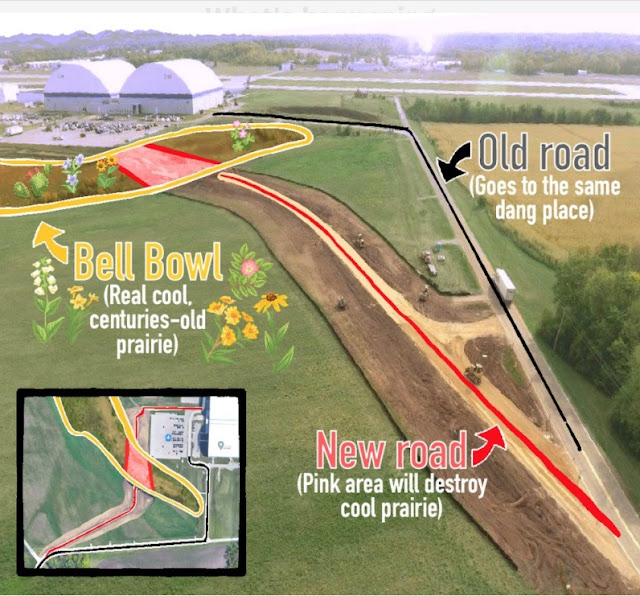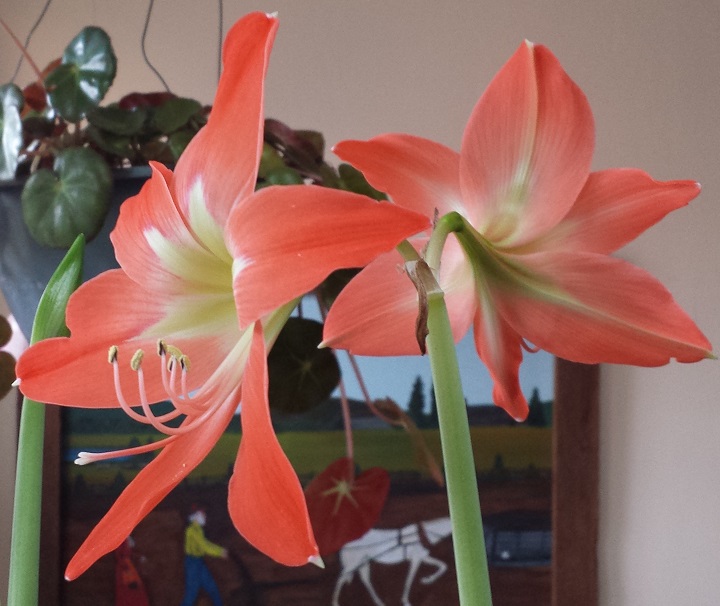Prairie Uprising on the Horizon
Podcast: Play in new window | Download (Duration: 2:03:08 — 58.1MB)
Subscribe: Apple Podcasts | Spotify | Android | iHeartRadio | Podchaser | Email | TuneIn | RSS | More
(November 21, 2021 – Image courtesy of Domenico D’Alessandro) The bulldozers at Bell Bowl Prairie sit quietly. For now. Winter will soon descend on the ancient landscape. Now, people will hunker down in meeting rooms and at computers and on portable devices. They will continue to fight for the land and its biodiversity. A lot has happened since we last reported on this issue just a month ago. Since then, the Greater Rockford Airport Authority temporarily stopped its expansion plans. That was due in part to discovery of the federally endangered rusty patched bumble bee on the prairie. And pressure also came from a kind of prairie uprising by concerned conservationists.
Basically, Bell Bowl Prairie is a rare remnant dry gravel prairie. Unfortunately, Chicago Rockford International Airport (RFD) surrounds the land. The airport has planned a major expansion, which will result in the prairie being plowed under. Except, this time, not by plows.
Timeline
I can’t do justice in this post to everything that has happened in just one month–certainly not the past three months. I urge you to look at the timeline on the Natural Land Institute website. Or read this excellent post by Illinois naturalist Stephen Packard. This week, Illinois Governor JB Pritzker spoke at Chicago Rockford International Airport (RFD). In “governor speak,” he seemed to be suggesting that cooler heads could prevail. He said, “we don’t need to have a trade-off here.” Packard responds,

The Governor should be thanked by many. Yes, we can have both. That message has been central to the conservation argument from the beginning. Jobs yes. Prairie yes. There need not be a trade-off. The surviving prairie is just 14 acres of a 3,000-acre airport. A great many acres of open land are adjacent to the airport. Buildings and roads don’t have to be put on the prairie. The prairie should be dedicated permanently as an Illinois Nature Preserve. A redesigned plan may cost more, especially as some existing construction would have to be redone. The Airport should bear the cost of correcting its more egregious missteps. The federal and state governments should help the airport as needed and appropriate – when the airport does the right thing. Active and strong public support for Bell Bowl Prairie now is crucial to that good outcome.
Meanwhile, the courts might still play a role in the prairie uprising. Regulatory agencies are cautiously communicating with the concerned parties. Landscape designers like Domenico D’Alessandro have volunteered alternative plans to the Airport Authority. Activists commented at the airport board meeting just Thursday. In short, there is a lot going on. There’s even a GoFundMe page to help cover the legal costs. Which is a good thing, because the airport continues to make less than veiled statements that they intend to go through with their expansion.
The future of the prairie uprising
Today we welcome Amy Doll, director of the nascent Friends of Illinois Nature Preserves. Its goal is to support the Illinois Nature Preserves System. She is one of the leaders in the effort to save Bell Bowl Prairie. In fact, she spoke at the aforementioned airport board meeting. She notes that conservationists are currently locked out of the prairie. Is the prairie being protected? No one knows. Chris Benda joins her. He is a research botanist and instructor at Southern Illinois University in Carbondale, Illinois. Even better, he calls himself the Illinois Botanizer. Cool.
It’s possible that the crisis at Bell Bowl Prairie will create a prairie uprising in Illinois. There is talk now about how to permanently save our remnants. If so, that would be a good outcome. We’ll discuss that today.
Return of the Snipologist
The holidays are here, ready or not. Some of you will grow “holiday” plants. Actually, they’re just plants. But over the years, they’ve become connected to the holiday season. You know what I mean.
- Poinsettias (we call them “ponzetters”)
- Amaryllis (they’re actually hippeastrums, but we’ll explain)
- Christmas cactus (which might be an Easter cactus or a Thanksgiving cactus)
- Christmas cyclamen

Friend of the show Dan Kosta returns to walk us through all of them. He works at Vern Goers Greenhouse in Hinsdale, Illinois. And he’s passionate about bonsai. (Hence the term “snipologist.”) He also doesn’t hold back about plants of any kind. For instance, he’s not a particular fan of ponzetters. He thinks you should try cyclamen. “Cyclamen, native of the middle East, was the Christmas flower before the poinsettia, a native of Mexico, replaced it. Still my favorite Christmas flower.”
He says Thanksgiving, Christmas, and Easter cactus are not the same. They are Zygocactus, Schlumbergera, and Rhipsalidopsis in that order. Thanksgiving cacti are quicker to bloom and come in many colors. The segments have “horns” which the others do not. True Christmas cactus are only in pink and hard to find for sale. Easter cactus flowers look daisy-like. There are several colors. By the way, here’s how to get your Christmas cactus to bloom.
As for amaryllis, here’s the story.
Now the hard part–keeping them all alive and thriving. Dan will have advice about that, too. Send us your questions!


